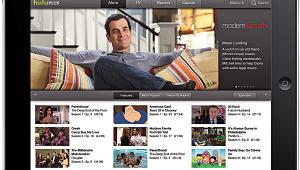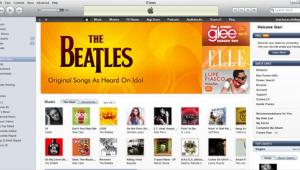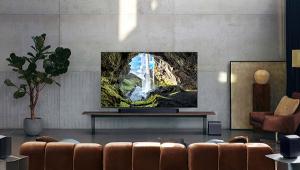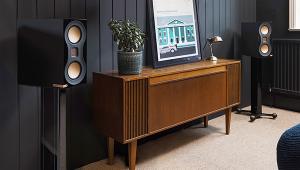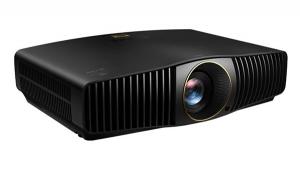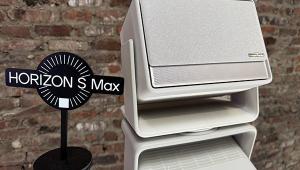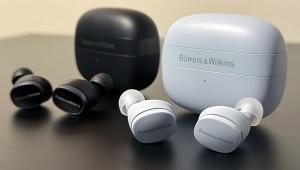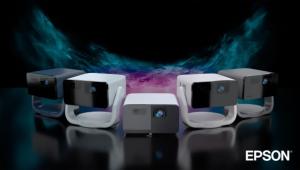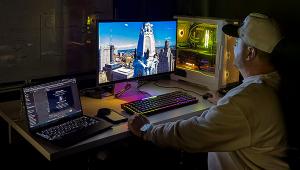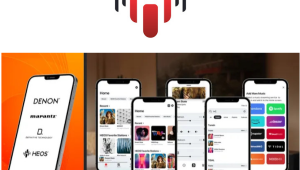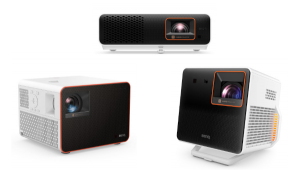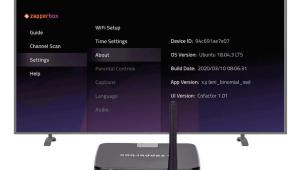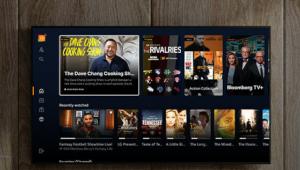Xbox 360 Page 2
This is definitely the way to browse your music collection, too, since it's the only Xbox interface that displays album cover art. Beyond music and photos, you also have access to any video files you've recorded or downloaded - including high-def! Yep, use the Media Center to record your favorite shows off the air in HD, then stream them for viewing wherever the Xbox is connected. A recorded episode of Lost had the same terrific video quality via the 360 that I've come to expect from watching the show through my high-def cable box.
You can also control the Media Center PC's TV tuners from the 360, scheduling recordings and using all of the DVR functions. Even browsing the free program guide (delivered from the Internet) is way cool. Click on Movies, and you get a list of films currently playing on TV, complete with DVD cover art! You can also browse cast and director info, read reviews, or find similar movies. When is the last time just finding what to watch got you excited?
Looking for a way to share media without using your home network? Connect a digital camera or other portable device directly to one of the 360's three USB ports. Music and photos on it will appear automatically under the Portable Device tab. After my digital camera was correctly identified as a Canon PowerShot A95, I was able to browse through photos on its memory card. The 360 supports JPEG, GIF, BMP, and TIFF photo files and MP3, WMA, and AAC audio files.
The 360 goes online and grabs artist and album info whenever you pop a CD into the tray for ripping or listening. (Ripping, which is done in WMA format at 192 kbps, takes about 6 minutes.) You can only create playlists on the 360 for songs stored on its hard drive, but any playlists already on your computer(s) show up under Saved Playlists. If you get sick of hearing a game's original soundtrack, all 360 games let you import your own tunes for in-game background music - a slick touch.
Ergonomically, the next Xbox is a hit. Microsoft is finally treating the 360 like every other component in your rack, letting you turn it on remotely. Simply press the green X button on the controller (or the power button on the Universal Media remote), and the system fires up. This might seem minor, but all previous consoles required you to get up off the couch to go over and press the power button. You might be able to tolerate this with a seldom-used gaming rig, but never in a component designed to be the hub of a home theater system.
Before putting on my game face, I tested how well the Xbox Media Center Extender streamed content wirelessly via an 802.11a router that was 25 feet away and on the other side of a wall. The wireless link was rock solid with standard-def shows, but on HDTV scenes with fast motion and a lot going on, like the massive battle at the end of Attack of the Clones, the picture stuttered and a "Network Congestion" message appeared. You're still better off watching HDTV with a wired connection - and it looks great.
High-Def Sound & Vision Don't think Microsoft forgot what the 360 is really about: gaming. This baby is bred for it, and it didn't disappoint me. Since every Xbox 360 title supports either the 720p or 1080i high-def format, images virtually leap off the screen. (If you haven't upgraded to an HDTV yet, don't worry - the 360 also supports both 480i and 480p resolutions.)
Playing NBA 2K6 was eerily close to watching a high-def broadcast of a real game. I could easily recognize individual players, right down to Richard Hamilton's signature face protector. The cinematic visuals coupled with the sheer graphics horsepower under the 360's demure hood means every game has tons more going on. From the detail on the ball, to the way the net reacts to a swish, to the sweat pouring off players as the going gets tough, the eye-popping visuals nearly made me forget I was playing a game. That is what next-generation gaming is about: graphics and sound that put you right inside the action. (For the lowdown on more reference-quality titles to check out, see "The New Games in Town.")But incredible graphics are only half the equation - audio is what really adds impact to the experience. Every Xbox title supports Dolby Digital 5.1 sound. Never again wonder where gunshots are coming from - hear them whizzing out of your surround speakers and know to check your six-shooter. Microsoft has supersized the audio capabilities, infusing the 360 with 32-bit audio processing and 320 independent compression channels. That means more processing power to handle ambient effects like leaves rustling and boots crunching on gravel, all to make the gaming experience more engrossing.
One complaint: With its mandate for HD gaming, it's surprising the 360 doesn't have an HDMI or DVI output for the very best digital video. And the supercharged processing could have easily been used to upscale DVDs to 720p or 1080i instead of just 480p.
Quibbles aside, there's no doubt that the Xbox 360 makes a giant cannonball splash into the convergence pool. Its high-def gaming makes it a natural to fit into your A/V rack. And Media Center PC owners will want to use it as a natural extension of that experience, streaming digital media to the best system in the house. This is how ol' Bill is gonna make his next $100 billion, and I'm ready to chip in the first $399.
- Log in or register to post comments







